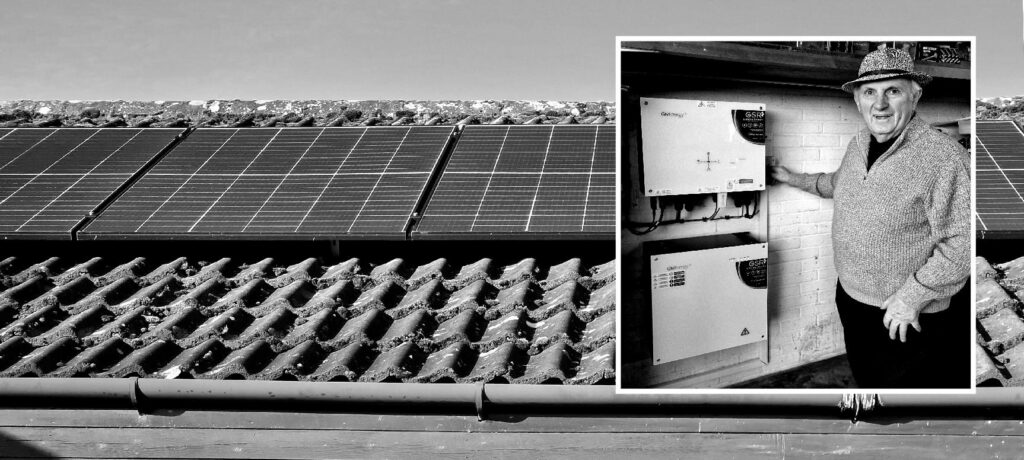In this month’s Littlebury Energy Project (LEP) update, we talk to Gordon Ridgewell about his recent experience of having solar panels installed and also to Jonathan Ashe about the issues affecting houses in the Littlebury Conservation Area.

The photographer Gordon Ridgewell moved to Littlebury about 10 years ago, his late wife Megan’s family having been associated with the area since at least 1646. In August he had 10 solar panels installed on his garage roof accompanied by a battery storage system.
Ian Dunham: What motivated you to make the improvement?
Gordon: I had been inspired by my neighbour and Village Hall meetings to consider solar power. As well as the cost savings, I wanted to do my bit for the planet. After talking to a salesman visiting the village, I took the plunge, but confirmed they were legitimate by visiting their offices – 2 staff recognised me from Littlebury and my wedding photography days! (Note: it is not recommended to place business with a cold caller without fully qualifying the offer and the supplier).
Ian: How was the installation process?
Gordon: Fantastic! The system was installed within 2 weeks of ordering, and the process took just a few hours. I was impressed by the quality and speed of the installation. The LEP volunteered to help during the sales pitch and then oversaw the installation.
Ian: How is the system working out?
Gordon: In the summer and early autumn I used very little electricity from the grid. Now it is winter less electricity is generated, but I have discovered that I can use the battery to store energy from the cheap overnight economy 7 rate which I then use during the day. This is very easy to control with the supplied mobile phone app. I will receive payment for electricity exported direct to my bank account once every 3 months.
Ian: Were there any problems along the way
Gordon: I was concerned initially about accepting an offer from a cold caller, but they proved very efficient. The one area where I had a problem was registering the system to receive payment for the electricity exported to the grid. The terminology is confusing and you have to deal with 2 companies, one for supply and one for solar power generation. This is now sorted. They also require a meter photo every 3 months which is a 2 man job. (Note: LEP can provide help and support with issues like these).
Littlebury’s large conservation area can restrict what you can do. LEP member Jonathan Ashe, Chartered Architect and Passivhaus Designer specialising in energy efficiency and Listed Buildings, is exploring options.
Ian: Does our Conservation Area affect energy saving improvements?
Jonathan: For buildings in the Conservation Area changes to a building’s external appearance (e.g. external wall insulation) require Planning Consent. In addition for Listed Buildings, in simple terms, any alterations (including energy saving measures) require Listed Building Consent (and possibly Planning). Historic England (HE) and UDC are most concerned with the removal of “original fabric” (plaster, render, solid floors, glazing, etc). These are the main areas where “fabric first” energy improvements are made, before considering green heating systems such as heat pumps.
Ian: Are you working with local government/planning on this?
Jonathan: We’re working with HE and UDC Planning Dept/Conservation Officer and using Littlebury as a test case to simplify the consent process for Listed and non-Listed Buildings to reduce or remove costs.
Ian: What’s the likely direction of travel?
Jonathan: First, to ensure consistent treatment, UDC have agreed that applications from Littlebury will be looked at directly by Serena (Conservation Officer), rather than being outsourced. We’re investigating with HE and UDC the potential use of “Local Listed Building Consent Orders”, as pioneered by Kensington and Chelsea, to simplify applications. At the same time, we’re looking at a targeted approach for each building with a minimal required set of info.
